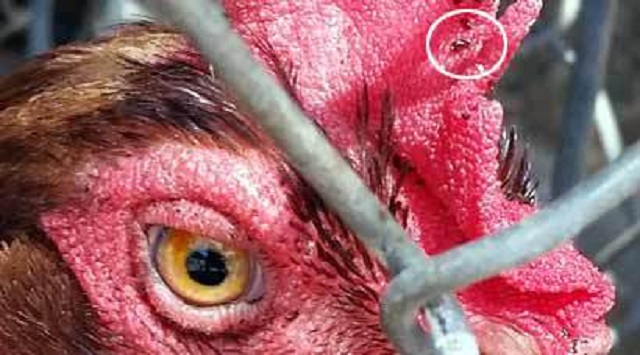
The Sunday News

Farming issues with Mhlupheki Dube
THIS week we take a look at another external parasite of importance in poultry especially the indigenous poultry which is a common fowl reared by most smallholder communal farmers. We start by looking at the poultry fleas (amatseketsa).
The poultry fleas which are also commonly known as stick-fast or sticky tight fleas are scientifically known as Echidnophaga gallinacean. It is a very common flea in chickens and may infest a wide variety of birds, poultry and mammals.
Poultry may develop clusters of the dark coloured fleas which stick in clusters around the eyes, comb, wattles, and other bare spots. Stick-fast fleas are spread from an infested chicken to non-infested chickens by direct contact. Echidnophaga gallinacea are difficult to remove because their heads are embedded in the host’s flesh and they cannot be brushed off.
Adult fleas are approximately 1,5 to 4mm in length, laterally flattened and are black to brown in colour. Their head is sharply angled at the front. The adult fleas attach to the skin around the face and head, causing severe irritation, nodular formation and in some cases, blindness. They can cause blood loss, anemia, and even death. The skin over the nodules often becomes ulcerated and young birds may be killed by heavy infestations.
On fertilisation, the female fleas burrow into the skin of the fowl, mainly on the comb, wattles and around the eyes of the birds, resulting in the formation of nodules in which eggs are laid. Hatching occurs within the nodules. The female lays up to 20 eggs at a time and about 400-500 total during her lifetime.
Larvae drop to the ground to develop in soil around chicken cages, pupating in two weeks. Adult fleas emerge from pupae and are free-living until breeding occurs. Female fleas then attach to the host and lay eggs to complete the cycle.
Managing fleas on birds requires an integrated approach. Both the host bird and the environment must be treated at the same time to be effective. Birds and surroundings should be sprayed with insecticide. Control the fleas by treating the birds, removing them from the infested area for three weeks, and treating the fowl runs. This entails removing fecal droppings and litter, and spraying a suitable insecticide as recommended by the veterinary officers. The birds can be treated again before returning them to the treated fowl run so as to ensure that no infections are imported into the run.
Flea infestations are difficult to prevent because young fleas survive in the poultry house and only attach to the chicken when they become adults. Brooding hens should be treated if they have fleas so that infestation of chicks is reduced. Domestic animals such dogs, having contact with poultry should be treated at the same time. A range of insecticides can be used for flea control on the birds and these are readily available in veterinary shops as well as advice.
The fleas can be treated with applying greasy or oily substances which kill the mites by stopping them from breathing. Some easily available products for smallholder farmers which have been recommended include paraffin and petroleum jelly. As far as possible, avoid contamination of other areas of the skin with these products. The dead fleas will not drop off for some days.
Some farmers have successfully used a few drops of a pour-on insecticide on the head of the chicken while others have even used tick grease with success. Farmers are also known to be very experimental and often there are lot of non-text book solutions to some of the challenges that farmers face. It is also important to liase with fellow farmers and check how they deal with a problem such as the one you are having.



